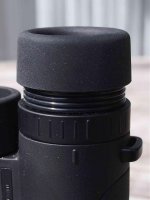Perhaps they are not designed by humans:
I'm smart, I can make things
One reviewer of the original 820 Audubon called its oversized, flat, hard plastic eyecups "not designed for human faces."
My beef is how eyecups often don't fit my face, particularly Japanese-made optics such as the SE, EII, 820 Audubon, Celestron Novas, and Vixen 7x50 Foresta, and some Chinese-made bins such as the Nikon Aculon. I think they are designed by Asians for Asian faces. Renze has given me some good tips on how to modify the SE and EII eyecups.
OTOH, Swaro and Doctor binoculars (before that Jena) have eyecups that seem better suited for European faces, and hence, mine.
I agree with you about the annoyance of finicky eye placement. Although some members are "stationary birders" (particularly in single digit temp weather

), most of us bird "on the fly" and pan and move are eyes around the FOV. If I could find a bin that gave as sharp and contrasty image to the edges like the SE and didn't cost and arm and leg, I would sell the SE and buy it, but so far the only bins I've used that match the SE's image quality have been alphas.
Brock






